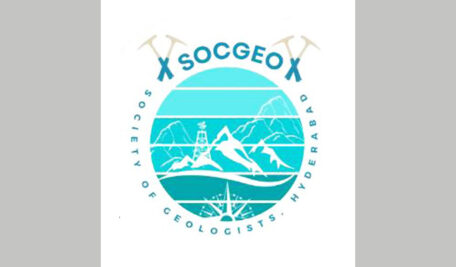Science
Experts Discuss AI’s Impact on Geosciences at Osmania Workshop

On July 20, 2025, an interactive workshop titled “Role of Artificial Intelligence (AI) in Geosciences” took place at the University College of Science, Osmania University in Hyderabad. Organized by the Society of Geologists (SOCGEO) in collaboration with the Department of Geology, this event brought together experts and professionals to explore the integration of AI in geoscience research and applications.
Importance of AI in Data Analysis
During the workshop, Prof. D. Karuna Sagar, a Senior Professor of Physics and Dean of the Faculty of Science at Osmania University, emphasized the critical role of AI in scientific analysis. He highlighted how AI’s capability to swiftly process large volumes of data significantly enhances research efficiency. This speed and accuracy are essential in fields like geology, where data analysis can be time-consuming and complex.
Prof. G Prabhakar, Principal of the University College of Science and Chairperson of the Board of Studies at Osmania University, cautioned attendees about the importance of data quality in AI applications. He noted that incorrect data inputs could lead to misleading results, underscoring the need for rigorous validation processes when employing AI technologies.
Also present at the workshop were Prof. I Panduranga Reddy, Director of the Directorate of Admissions and Head of the Department of Geology, along with members of the organizing committee, including B P Ramprasad, P Nagendra Kumar, TPS Ramam, PK Mathur, Mukund Kulkarni, and C. Hanumanth Reddy. Their collective expertise contributed to the discussions surrounding the future of AI in geosciences.
Industry Insights and Future Directions
The workshop also attracted senior professionals from the Oil & Gas and Mineral & Mining industries, including C Sandilya, CVSN Prasad, JD Rao, DN Prasad, and Basha. Their participation highlighted the growing interest in AI applications within these sectors, where data-driven decisions are becoming increasingly vital.
Concluding the event, Prof. B. Veeraiah, Head of the Department of Centre of Exploration Geophysics at Osmania University, remarked on the transformative potential of AI technologies in geosciences. He encouraged ongoing collaboration between academia and industry to foster innovation and improve research outcomes.
As the field of geosciences continues to evolve, workshops like this one play an essential role in bridging the gap between technology and practical applications, ensuring that professionals are well-equipped to harness the power of AI.
-

 World4 months ago
World4 months agoSBI Announces QIP Floor Price at ₹811.05 Per Share
-

 Lifestyle4 months ago
Lifestyle4 months agoCept Unveils ₹3.1 Crore Urban Mobility Plan for Sustainable Growth
-

 Science3 months ago
Science3 months agoNew Blood Group Discovered in South Indian Woman at Rotary Centre
-

 World4 months ago
World4 months agoTorrential Rains Cause Flash Flooding in New York and New Jersey
-

 Sports3 months ago
Sports3 months agoBroad Advocates for Bowling Change Ahead of Final Test Against India
-

 Top Stories4 months ago
Top Stories4 months agoKonkani Cultural Organisation to Host Pearl Jubilee in Abu Dhabi
-

 Science4 months ago
Science4 months agoNothing Headphone 1 Review: A Bold Contender in Audio Design
-

 Top Stories4 months ago
Top Stories4 months agoAir India Crash Investigation Highlights Boeing Fuel Switch Concerns
-

 Sports3 months ago
Sports3 months agoCristian Totti Retires at 19: Pressure of Fame Takes Toll
-

 Business4 months ago
Business4 months agoIndian Stock Market Rebounds: Sensex and Nifty Rise After Four-Day Decline
-

 Politics4 months ago
Politics4 months agoAbandoned Doberman Finds New Home After Journey to Prague
-

 Top Stories4 months ago
Top Stories4 months agoPatna Bank Manager Abhishek Varun Found Dead in Well









